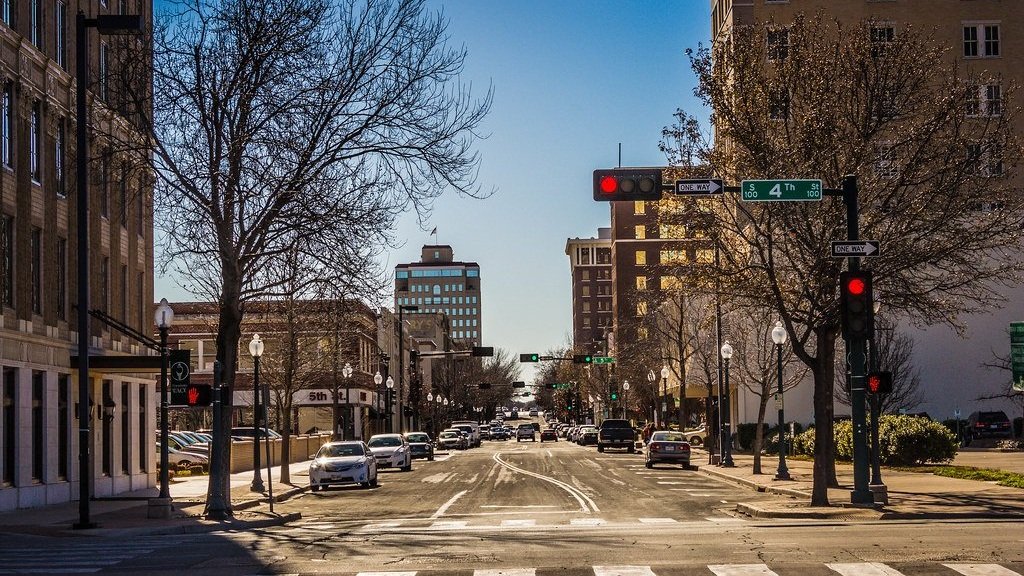I recently married my boyfriend Rob and moved ten minutes from my home in Sanger Heights into a garage flat belonging to a couple from our church. Rob had been living here for a few months already and as we headed home from our honeymoon in Santa Fe, I began thinking about what our new space and new life rhythm would look like. How would I decorate the apartment? Which grocery store would we shop at? Where would I find a good matcha latte?
One of the most immediate changes I had already been thinking about for weeks before the wedding was that I would no longer live a 10-minute bike ride from downtown. While living in Sanger Heights, I could bike to five different coffee shops, to church, a small grocery store, several friends’ homes, and to Cameron Park if I needed to unwind. Biking every day was easily one of the highlights of my life.
Now, we live in Park Lake, a pretty neighborhood not far from Lake Waco. There are advantages—for instance, not living in the inner city means fewer disturbances at night. The neighborhood features large, expansive trees and fewer dogs off leash, making it more pleasant to take a walk as the sun sets. Our friends keep a lovely backyard with a pool and we are technically closer to popular Waco destinations like Cameron Park and the Waco dam, which is a nice place to stroll, bike, or run.
But within days of moving in, the implications of not being able to bike for my daily life settled in. We live in what I call a “third-place desert.” There is not a single pub, coffee shop, plaza, or shopping district in (safe or pleasurable) walking or biking distance from our home. There is a grocery store a mile away, but to get there would mean walking a mile down a road with plenty of speeding cars and patchwork-style sidewalks. Until I save enough to buy an electric scooter, I have to accept the reality that commuting is a way of life for us.
At Strong Towns, we write a lot about the fragility underlying the design, development, and governance of most American cities, including the fragility of car-centric design. Sometimes, as I read about these issues, I struggle because they can feel so abstract and complicated, so far away from my ordinary life. Not anymore. This change in lifestyle has “brought it home,” so to speak, for me. It’s made it easier for me to see how these complicated-sounding policies lead to fractured city design and unsustainable, counterintuitive patterns of life.
The good news is that this is something we can change. Better policy can lead to better patterns of life, but only if we take the time to connect the two. Too often, the lived experience of policy can get lost on city staff, elected officials, and even activists. I’ve seen examples of this as I’ve become involved in various conversations about Waco. For example, conversations about public transit focus heavily on providing the bus stop, but what about shade? Waco is notoriously hot in the summer. Plans for downtown often feature bike lanes in downtown, but what about lanes to connect residents living 1–2 miles away? Adding a new food hall downtown was exciting, but where’s the crosswalk to get people across four lanes of high-speed traffic to the main front door? Wow, we’re getting a new hotel downtown, but how will hundreds of new cars fighting for parking affect the lives of the students attending the K-12 private school just blocks away?
We should by all means support new businesses and transportation improvements in our cities. But it’s also worth pausing and asking if these initiatives will actually make our city more livable. By livable, I mean: will this plan or idea truly improve the rhythm and pattern of life for the people who live here? Will it solve real problems? Will it make the city more inviting, comfortable, and pleasant? Will it encourage more creativity and engagement? These are critical questions to ask city staffers and elected officials. You might be shocked at how entire departments can function with little to no requirement (or ability) to measure the extent to which they are improving life for ordinary citizens (or not).
I’m currently reading The Social Life of Small Urban Spaces, by William H. Whyte. Like Jane Jacobs and Jan Gehl, Whyte’s observations about what makes public spaces work is grounded in humble observation of ordinary life. To quote Stephen Covey, this is what it looks like when city plans “start with the end in mind,” the end being life itself. Citizens and city leaders striving to pivot from the Suburban Experiment and car-based design to more resilient models of growth and development would do well to follow this example.
Start by noticing how life unfolds for diverse types of people in your city. Imagine how resilient design might change their lives, not their minds. Perhaps more cafés and coworking venues closer to neighborhoods would cut down on commuting? Might adding protected bike lanes for children to bike to school free up more time for moms who no longer have to do pickups? Could community gardens improve local food supply and help neighbors build social ties?
Resilience is critical if cities are going to win what Strong Towns President Chuck Marohn calls “the infinite game,” but embracing resilience involves more than embracing a certain set of policies. Embracing resilience means reimagining our cities through the lens of conservatism (using public resources sustainably) but also dynamism: what kinds of activities do we want to encourage? What kind of life do we want to make possible? The goal is to harmonize these two goals so that our cities become not just resilient for the long haul, but livable in the short run—and delightfully so.
